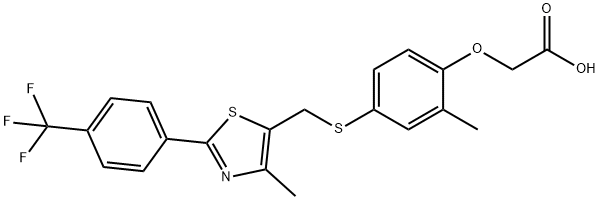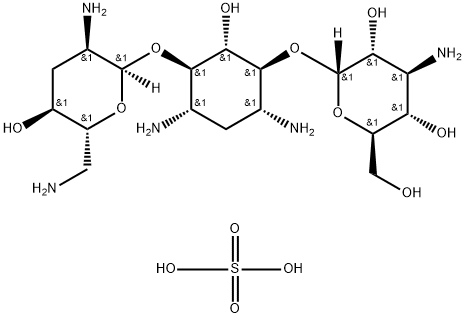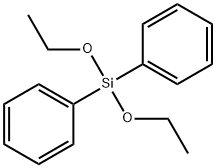GW-501516
Synonym(s):GW 501516
- CAS NO.:317318-70-0
- Empirical Formula: C21H18F3NO3S2
- Molecular Weight: 453.5
- MDL number: MFCD09033000
- EINECS: 1592732-453-0
- SAFETY DATA SHEET (SDS)
- Update Date: 2024-12-18 17:20:15

What is GW-501516?
Description
GW501516, also known as GW-1516 or cardarine and endurobol, is a peroxisome proliferator-activated receptor delta (PPAR-δ) agonist. Activation of the receptor will increase fat-burning capacity and muscle production, as it changes the body's fuel preference from glucose to lipids.
Description
Peroxisome proliferator-
Chemical properties
White Solid
History
GW501516, also known as Cardarine, was originally discovered in the early 1990s during a research collaboration between two large pharmaceutical companies. The initial proposed use was for the treatment of hyperlipidemia (elevated fats in the blood), though later studies looked at its effectiveness for treating obesity, diabetes, and cardiovascular disease.
The Uses of GW-501516
An experimental drug meant to control lipids and increase the level of HDL, or good cholesterol, in the bloodstream. A cell-permeable, thiazolyl compound that acts as a potent, high affinity, PPARd agonist. Exhibits selectivity for PPARd compared t
The Uses of GW-501516
GW501516 has been used to study its effect on mutation-driven colorectal tumorigenesis and tumor invasion using mouse model.
What are the applications of Application
GW501516 is a selective and potent PPARβ agonist
Definition
ChEBI: An aromatic ether that is phenoxyacetic acid in which the phenyl group is substituted at position 2 by a methyl group and at position 4 by a (1,3-thiazol-5-ylmethyl)sulfanediyl group, and in which the 1,3-thiazolyl group is substituted at positions 2 and 4 by p-trifluoromethylphenyl and methyl groups, respectively.
General Description
GW501516 is the most selective and potent PPARβ (EC50=1.1nM) agonist that has been demonstrated to be 1,000-fold more selective in comparison to existing subtypes. It can regulate expression of genes involved in lipid catabolism and energy uncoupling in skeletal muscle cells and has been shown to block insulin resistance and fatty acid-induced nuclear factor-κB (NF-κB) activation.
Biological Activity
GW 501516 is a potent and selective PPARδ agonist (EC50 = 1.2 nM). Displays <1000-fold selectivity over other PPAR subtypes. Increases ABC A1 transporter expression and induces apolipoprotein A1-mediated cholesterol efflux in vitro. Also increase serum HDL cholesterol and lowers small, dense LDL levels in obesity in vivo models.
Biochem/physiol Actions
PPARδ activation by GW501516, retards weight gain through fatty acid catabolism in adipose tissue and skeletal muscles. GW501516 causes an increase in the levels high-density lipoprotein cholesterol and apolipoprotein A (apoA) and reduction in the low density-lipoprotein cholesterol, apoB, and triglyceride.
Mechanism of action
GW501516 is a selective agonist (activator) of the PPARδ receptor. It displays high affinity (Ki = 1 nM) and potency (EC50 = 1 nM) for PPARδ with > 1,000 fold selectivity over PPARα and PPARγ.In rats, binding of GW501516 to PPARδ recruits the coactivator PGC-1α. The PPARδ/coactivator complex in turn upregulates the expression of proteins involved in energy expenditure.[31] Furthermore, in rats treated with GW501516, increased fatty acid metabolism in skeletal muscle and protection against diet-induced obesity and type II diabetes was observed. In obese rhesus monkeys, GW501516 increased high-density lipoprotein (HDL) and lowered very-low-density lipoprotein (VLDL).
storage
Store at -20°C
References
1) Oliver?et al.?(2001),?A selective peroxisome proliferator-activated receptor delta agonist promotes reverse cholesterol transport; Proc. Natl. Acad. Sci. USA,?98?5306 2) Ito?et al.?(2012),?A PML-PPAR-δ pathway for fatty acid oxidation regulates hematopoietic stem cell maintenance; Nat. Med.,?18?1350 3) Barroso?et al. (2011), The PPARβ/δ activator GW501516 prevents the down-regulation of AMPK caused by a high-fat diet in liver and amplifies the PGC-1α-Lipin 1-PPARα pathway leading to increased fatty acid oxidation. Endocrinology,?152?1848 4) Okazaki?et al.?(2010),?PPAR beta/delta regulates the human SIRT1 gene transcription via Sp1; Endocr. J.,?57?403 5) Narkar?et al.?(2008),?AMPK and PPARdelta agonists are exercise mimetics; Cell,?134?405
Properties of GW-501516
| Melting point: | 134-136°C |
| Boiling point: | 584.5±60.0 °C(Predicted) |
| Density | 1.42±0.1 g/cm3(Predicted) |
| storage temp. | -20°C |
| solubility | DMSO: soluble20mg/mL, clear |
| form | powder |
| pka | 3.17±0.10(Predicted) |
| color | white to beige |
| BRN | 18515150 |
| Stability: | Light Sensitive |
| InChI | InChI=1S/C21H18F3NO3S2/c1-12-9-16(7-8-17(12)28-10-19(26)27)29-11-18-13(2)25-20(30-18)14-3-5-15(6-4-14)21(22,23)24/h3-9H,10-11H2,1-2H3,(H,26,27) |
| CAS DataBase Reference | 317318-70-0 |
Safety information for GW-501516
Computed Descriptors for GW-501516
| InChIKey | YDBLKRPLXZNVNB-UHFFFAOYSA-N |
| SMILES | C(O)(=O)COC1=CC=C(SCC2SC(C3=CC=C(C(F)(F)F)C=C3)=NC=2C)C=C1C |
New Products
(S)-3-Aminobutanenitrile hydrochloride 4-Methylphenylacetic acid N-Boc-D-alaninol N-BOC-D/L-ALANINOL Tert-butyl bis(2-chloroethyl)carbamate 3-Morpholino-1-(4-nitrophenyl)-5,6-dihydropyridin- 2(1H)-one Furan-2,5-Dicarboxylic Acid Tropic acid 1-Bromo-3,5-Di-Tert-Butylbenzene S-2-CHLORO PROPIONIC ACID ETHYL ISOCYANOACETATE 2-Bromo-1,3-Bis(Dimethylamino)Trimethinium Hexafluorophosphate 4-IODO BENZOIC ACID 3-NITRO-2-METHYL ANILINE 1-(2,4-DICHLOROPHENYL) ETHANAMINE (2-Hydroxyphenyl)acetonitrile 4-Bromopyrazole 2-(Cyanocyclohexyl)acetic acid 4-methoxy-3,5-dinitropyridine 1-(4-(aminomethyl)benzyl)urea hydrochloride 2-aminopropyl benzoate hydrochloride diethyl 2-(2-((tertbutoxycarbonyl)amino) ethyl)malonate tert-butyl 4- (ureidomethyl)benzylcarbamate Ethyl-2-chloro((4-methoxyphenyl)hydrazono)acetateRelated products of tetrahydrofuran








You may like
-
 GW501516 97% CAS 317318-70-0View Details
GW501516 97% CAS 317318-70-0View Details
317318-70-0 -
 GW501516 98% (HPLC) CAS 317318-70-0View Details
GW501516 98% (HPLC) CAS 317318-70-0View Details
317318-70-0 -
 GW501516 CAS 317318-70-0View Details
GW501516 CAS 317318-70-0View Details
317318-70-0 -
 1975-50-4 98%View Details
1975-50-4 98%View Details
1975-50-4 -
 2-HYDROXY BENZYL ALCOHOL 98%View Details
2-HYDROXY BENZYL ALCOHOL 98%View Details
90-01-7 -
 2-Chloro-1,3-Bis(Dimethylamino)Trimethinium Hexafluorophosphate 221615-75-4 98%View Details
2-Chloro-1,3-Bis(Dimethylamino)Trimethinium Hexafluorophosphate 221615-75-4 98%View Details
221615-75-4 -
 14714-50-2 (2-Hydroxyphenyl)acetonitrile 98+View Details
14714-50-2 (2-Hydroxyphenyl)acetonitrile 98+View Details
14714-50-2 -
 118753-70-1 98+View Details
118753-70-1 98+View Details
118753-70-1